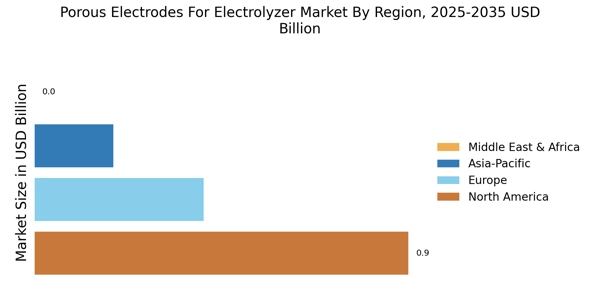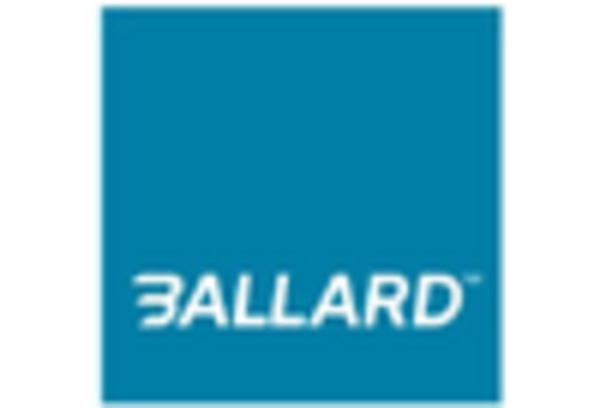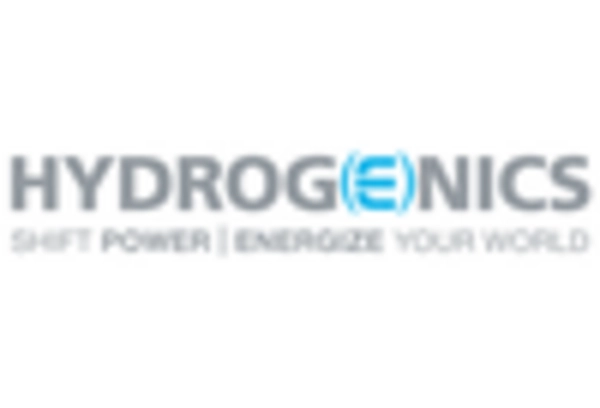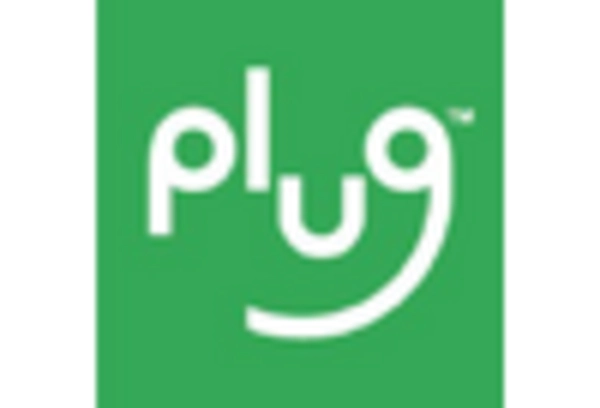Growing Awareness of Hydrogen Economy
The Porous Electrodes For Electrolyzer Market is witnessing a heightened awareness of the hydrogen economy, which is driving interest in electrolyzer technologies. As stakeholders recognize hydrogen's potential as a clean energy carrier, the demand for efficient electrolyzers is expected to rise. This awareness is being fueled by various initiatives and educational campaigns that highlight the benefits of hydrogen in achieving energy transition goals. Market analysts project that the hydrogen economy could generate over USD 2.5 trillion in revenue by 2050, underscoring the potential for growth in the electrolyzer market. The role of porous electrodes in improving the efficiency of hydrogen production processes is becoming increasingly recognized, positioning them as a critical component in the development of a sustainable hydrogen economy. This trend indicates a promising trajectory for the porous electrodes market.
Environmental Regulations and Policy Support
The Porous Electrodes For Electrolyzer Market is benefiting from stringent environmental regulations and supportive policies aimed at reducing carbon emissions. Governments worldwide are implementing policies that promote the use of clean energy technologies, including hydrogen production through electrolyzers. These regulations often include incentives for companies that invest in sustainable technologies, thereby fostering a favorable market environment. For instance, the European Union has set ambitious targets for hydrogen production, which is expected to drive demand for efficient electrolyzer systems. The alignment of regulatory frameworks with market needs suggests a growing opportunity for porous electrodes, as they are essential for enhancing the efficiency and effectiveness of electrolyzers. This supportive policy landscape is likely to catalyze further advancements in the industry.
Increasing Focus on Energy Storage Solutions
The Porous Electrodes For Electrolyzer Market is significantly influenced by the growing emphasis on energy storage solutions. As renewable energy sources, such as solar and wind, become more prevalent, the need for efficient energy storage systems is paramount. Electrolyzers play a vital role in converting excess renewable energy into hydrogen, which can be stored and utilized later. This process not only stabilizes energy supply but also enhances grid reliability. According to recent studies, the energy storage market is expected to reach USD 200 billion by 2026, with electrolyzers being a critical component of this ecosystem. The integration of porous electrodes in electrolyzers is likely to improve their performance, making them more competitive in the energy storage landscape. This trend indicates a promising future for the porous electrodes market as energy storage solutions gain traction.
Rising Investment in Renewable Energy Projects
Investment in renewable energy projects is a key driver for the Porous Electrodes For Electrolyzer Market. Governments and private entities are increasingly allocating funds to develop sustainable energy solutions, which include hydrogen production through electrolyzers. The International Energy Agency has indicated that investments in hydrogen technologies could reach USD 70 billion by 2030. This influx of capital is likely to accelerate the development and deployment of porous electrodes, which are crucial for enhancing the efficiency of electrolyzers. As the world shifts towards decarbonization, the demand for hydrogen as a clean energy carrier is expected to rise, further propelling the market for porous electrodes. The synergy between investment and technological advancement creates a robust environment for growth in this sector.
Technological Innovations in Electrolyzer Design
The Porous Electrodes For Electrolyzer Market is experiencing a surge in technological innovations, particularly in the design and fabrication of electrolyzers. Advanced manufacturing techniques, such as 3D printing and nanotechnology, are being employed to enhance the performance of porous electrodes. These innovations lead to improved efficiency and durability, which are critical for the commercial viability of electrolyzers. As a result, the market is projected to grow at a compound annual growth rate (CAGR) of approximately 15% over the next five years. This growth is driven by the increasing need for efficient energy conversion systems, which are essential for the transition to renewable energy sources. The integration of smart technologies into electrolyzer systems further enhances their appeal, making them more attractive to investors and stakeholders in the energy sector.


















Leave a Comment